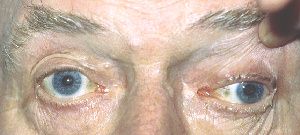Pupil examination is a common request
in the final MRCOphth. The likely instructions are:
'Look at this patient's eyes and decide what you would
like to examine next (the patient has
anisocoria)' or a straightforward 'Would you like
to examine this patient's pupils?'
The following steps are usually missed by candidates who
failed:
observation (anisocoria, heterochromia and ptosis)
testing the light reflex by standing at the side of the patient
(standing in front of the patient can stimulate accommodation reflex making
the pupils small and any changes more difficult to spot)
perform accommodation reflex with a fixating target (some
candidates forget this important step and some do not use a fixating target
such as Lange stick)
Most of the pupil cases seen in the examination are neurological
and the most commonly
encountered conditions are:
-
relative afferent pupillary defect (in the absence of anisocoria,
this is the most
common condition in the examination)
-
Adie's pupil
-
Horner's syndrome
-
third nerve palsy
-
Argyll-Robertson's pupils (less common than the above four)
Less commonly, you may have anisocoria secondary to trauma
or posterior synechiae.
The examiners' questions in this section are predictable:
-
The pathway of light and accommodative reflexes.
-
What are the causes of light-near dissociation?
-
What are the causes of anisocoria?
-
The pharmacological testings of anisocoria.
-
The significance of Horner's syndrome.
|
